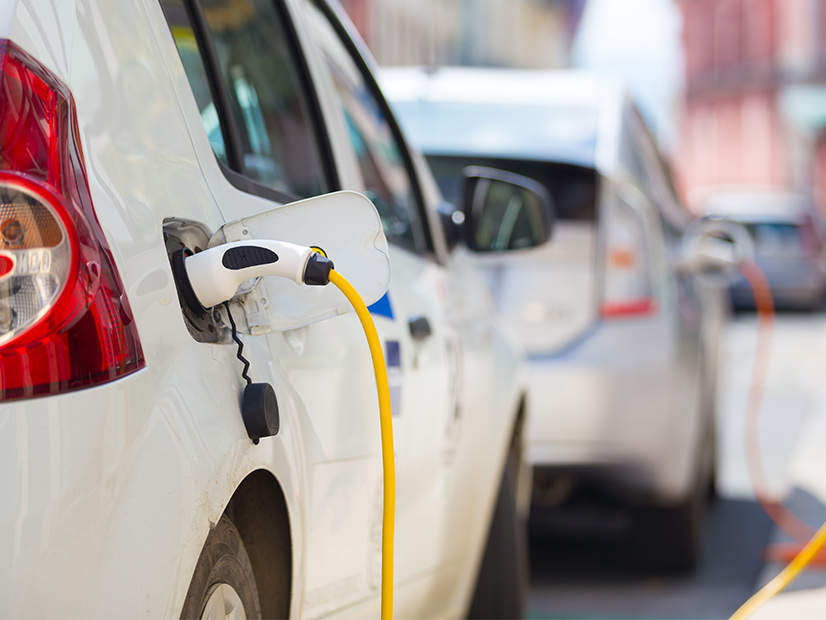Launching year two of an incentive program that subsidized the purchase of 7,000 electric vehicles in the first year, New Jersey outlined new rules Tuesday that focus heavily on encouraging drivers to buy lower-priced EVs, with a maximum incentive of $5,000 available only for vehicles priced $45,000 and below.
The eligibility criteria for the second year of the $30 million/year program mean that only seven vehicles for sale in the state are listed as eligible for the maximum incentive on the website of the program, and only one of them is of the popular Tesla brand. Vehicles with a manufacturer’s suggested retail price (MSRP) of more than $55,000 are not eligible for any incentive at all.
The program is part of New Jersey’s effort to get 330,000 registered light-duty EVs in the state by 2025, in line with its goal of using 100% clean energy by 2050.
In the first year of the program, Tesla vehicles accounted for 83% of the vehicle purchases that received an incentive, and the three counties that received the most incentives were the high-income Bergen, Middlesex and Monmouth. In a May 27 hearing on the second-year proposal, Cathleen Lewis, the New Jersey Board of Public Utilities’ (BPU) e-Mobility program manager, said the board in the next phase of the program wanted to make the incentives “more accessible to middle-income families.”
BPU President Joseph Fiordaliso, noting that transportation generates more than 40% of the state’s greenhouse gas emissions, said the program would not only reduce pollution but also improve public health and air quality in low-income and minority communities, who are disproportionately affected.
“Making EVs more affordable will encourage EV adoption and get us closer to 100% clean energy by 2050,” he said.
The BPU said the focus on the “moderately priced” enabled the final program rules to prioritize “incentive-essential” buyers, or those that would likely not buy an EV without the incentive. The focus also would “provide greater equity as New Jersey electrifies its transportation options,” the document said.
Impact of Threshold Cutoffs
Jim Appleton, president of the New Jersey Coalition of Automotive Retailers, a trade association that represents about 500 car and truck dealers, said the BPU made the “right call” in setting the threshold for the maximum incentive at $45,000 and the cutoff at $55,000. But, he said, the BPU “missed an opportunity to introduce more people to EVs” by setting the incentives for plug-in hybrid electric vehicles (PHEVs) so low. The BPU said it concluded that the PHEV incentives should be at the same rate as the other incentives.
“I know there is a vigorous debate in the EV world about the potential to cannibalize EV sales with a more generous incentive on PHEVs. And I understand that concern,” he said. But he added that “many buyers need the flexibility that PHEVs offer, and it is a powerful jumping off point for many consumers” who later will go on to by EVs. The impact of the low incentive can be seen in the fact that PHEVs — with an average incentive of $625 — accounted for only 3% of the incentives awarded in the first year of the program, he said.
He added that the 10-year program should be accelerated to “frontload” the funding so that a large number of incentives spark a wave of EV buys that would encourage other drivers to take the step.
Range of Incentives
The rules for the second year of the program were largely similar to those set out in the BPU’s straw proposal, released May 18, despite a vigorous analysis at a public hearing on May 27, which included several speakers who urged the BPU to raise the threshold for receiving the maximum incentive above $45,000. They argued that the low threshold would shut out too many vehicles from eligibility for an incentive. (See Drivers, Stakeholders Question NJ’s Proposed EV Incentive Rules.)
Stanislav Jaracz, president of the Central Jersey Electric Auto Association, suggested at the hearing that incentives be smaller to enable the BPU to give more of them and go further toward reaching 330,000-vehicle goal. He repeated that concern upon seeing the final rules.
“If they run out of the $30 million budget too soon, my words will prove correct,” he told NetZero insider in an email.
The second year of the program, as in the first, awards a $25 incentive for each mile of range that a vehicle can drive solely powered by electricity. That incentive is capped at $5,000 for vehicles with an MSRP of $45,000 and $2,000 for vehicles priced above $45,000 but below $55,000.
The program uses the same $25/mile criteria for PHEVs, which have a much more modest range, and so are eligible for smaller incentives. The range of the 16 eligible vehicles listed on the program website is between 17 and 47 miles, with incentives between $425 and $1,175.
The program for the first time also will enable EV purchasers to obtain the incentive at the dealership — the point of sale — instead of applying for it after purchase.
Data on the Charge Up New Jersey website shows that in the first year of the program, Tesla Model 3 vehicles, which were eligible for an incentive of $5,000, accounted for about 35% of the vehicles sold. Tesla’s Model Y accounted for 39%.
But while the Model 3 — which sells for $39,990, according to the company website — is eligible for the maximum incentive in the second year program, the Model Y — which sells for $52,990 — is only eligible for a $2,000 incentive.
To be eligible for an incentive, a vehicle must be purchased in New Jersey, rather than out of state. Twelve vehicles meet the criteria for an incentive, including seven that are eligible for an incentive that is below the maximum.



